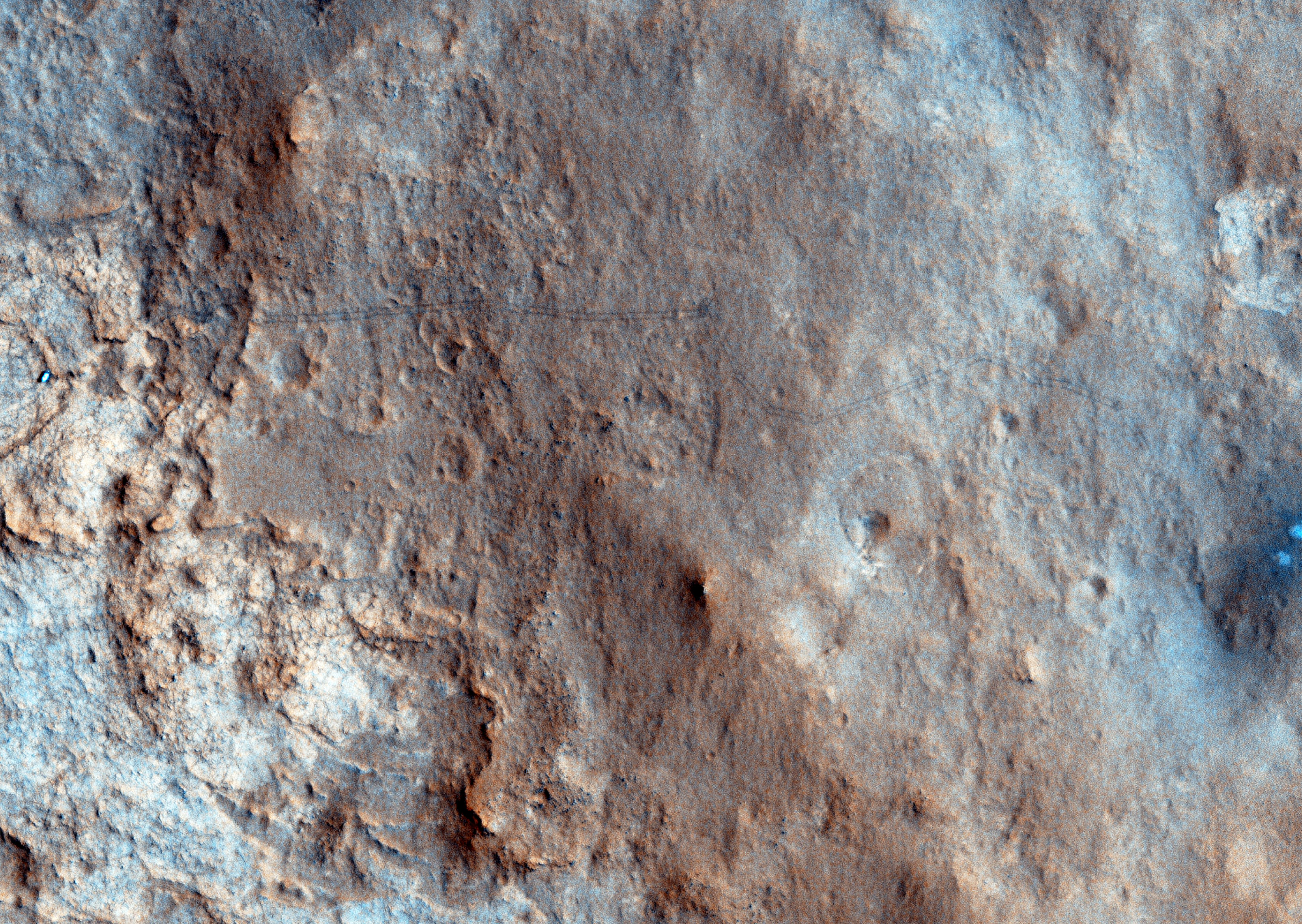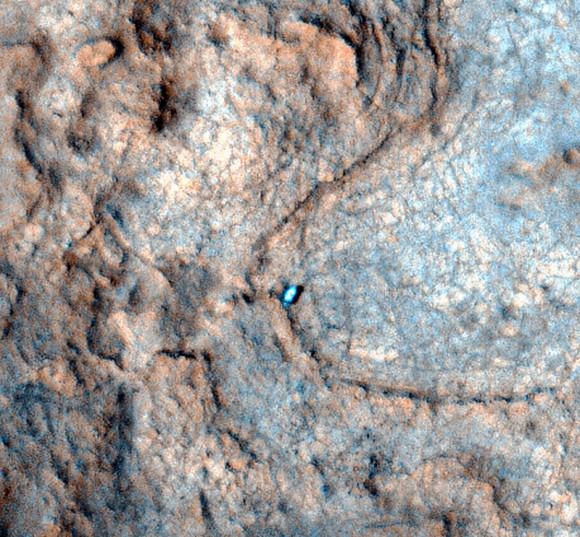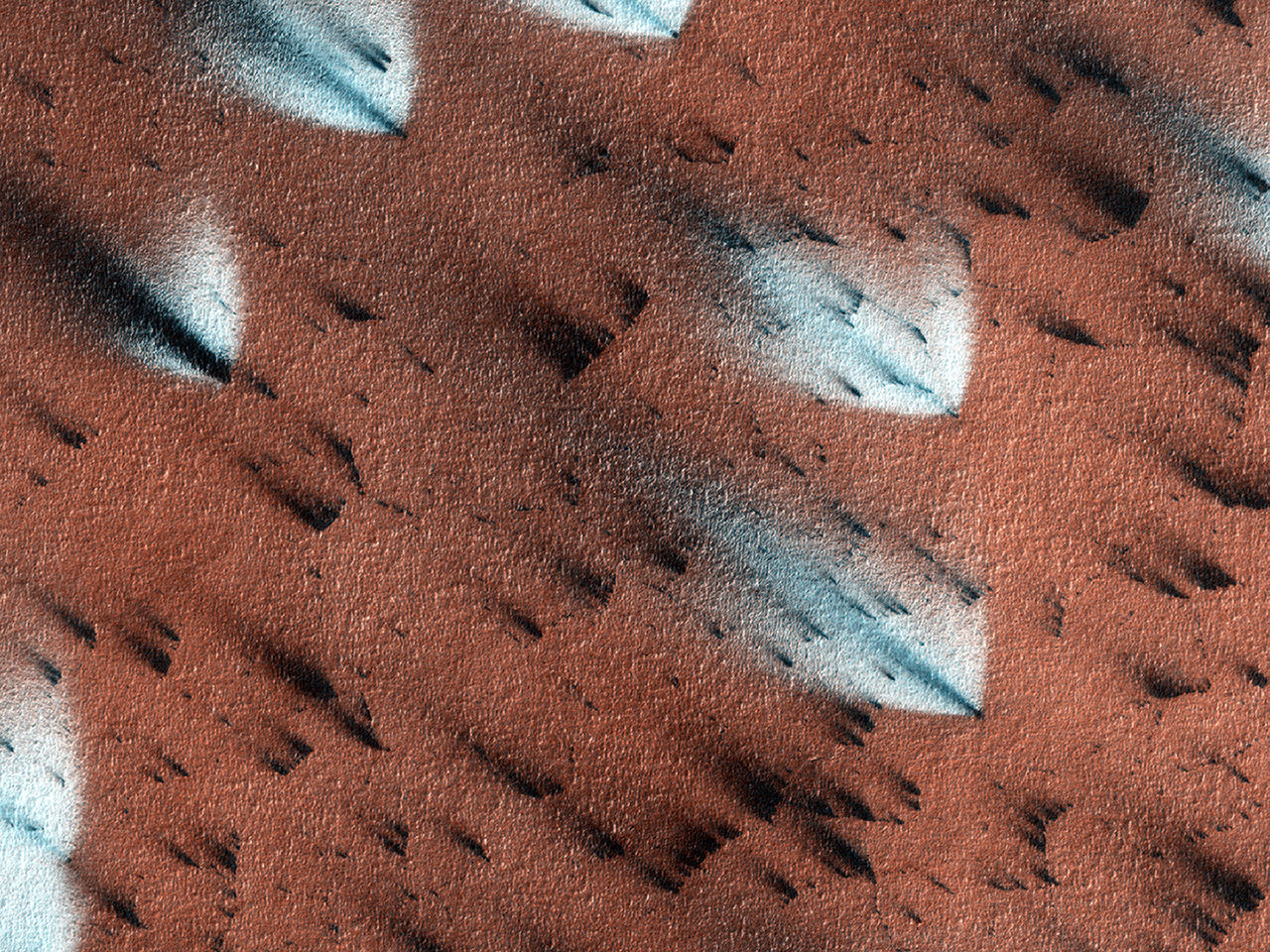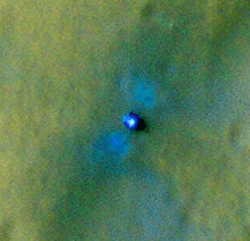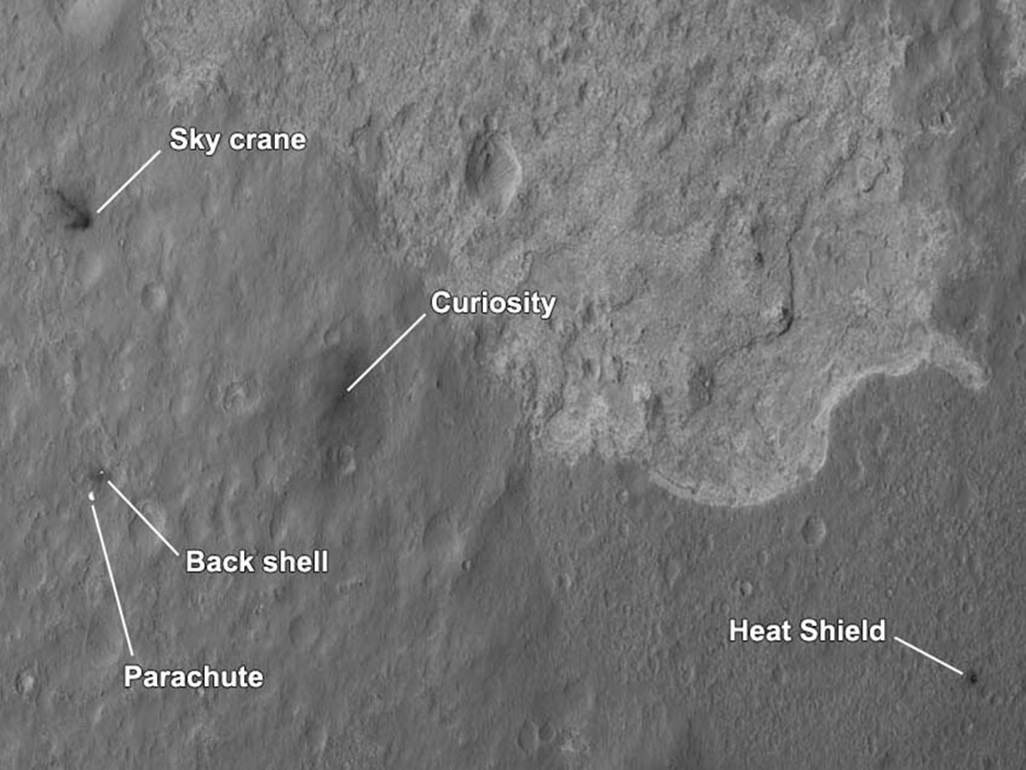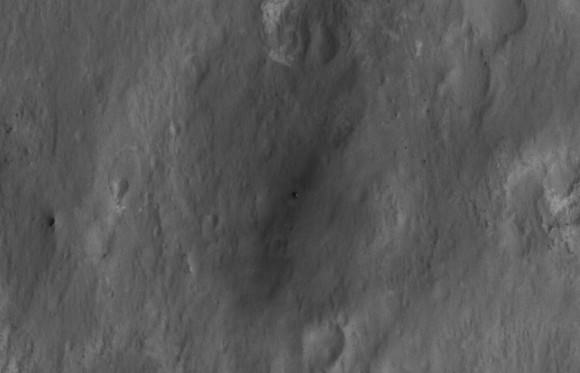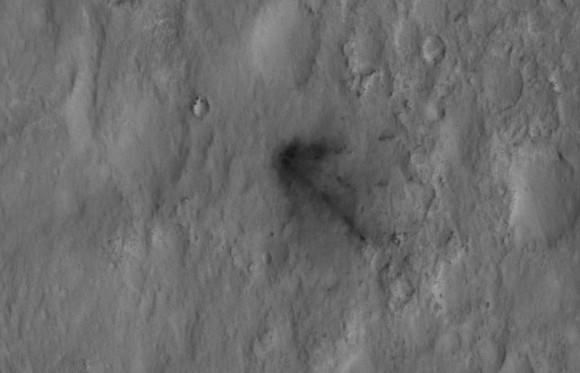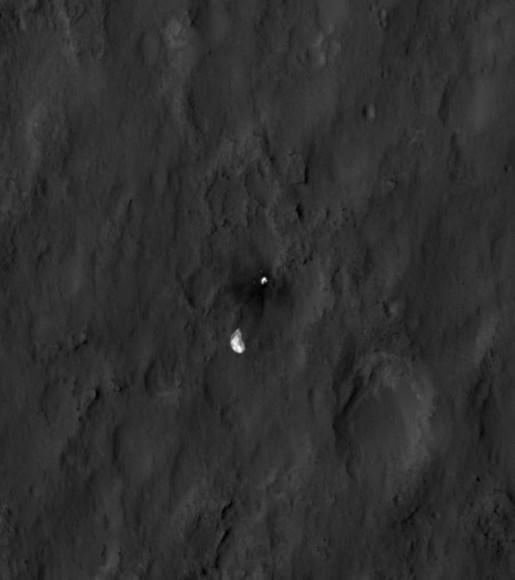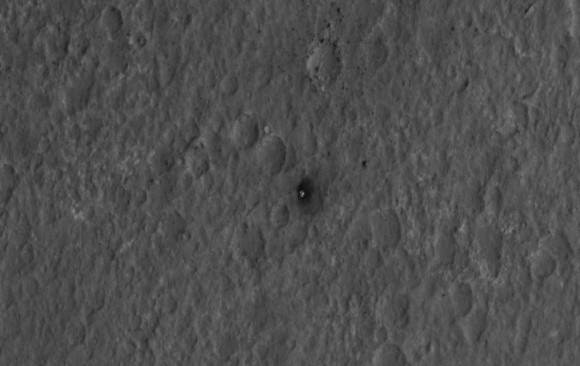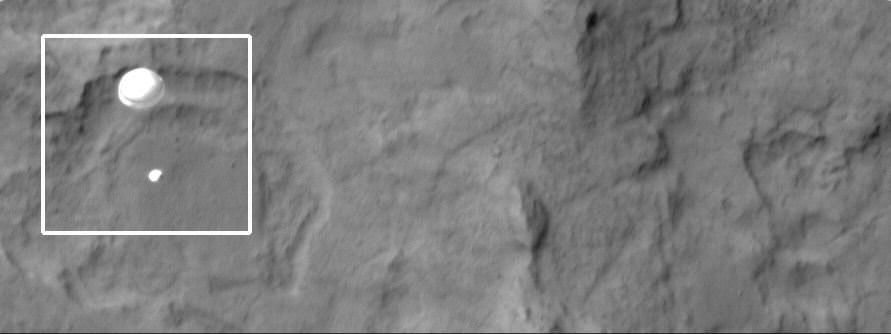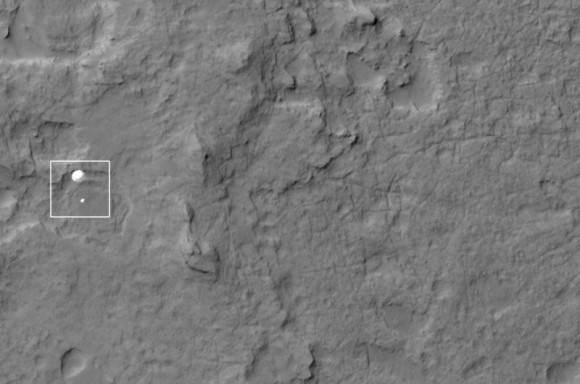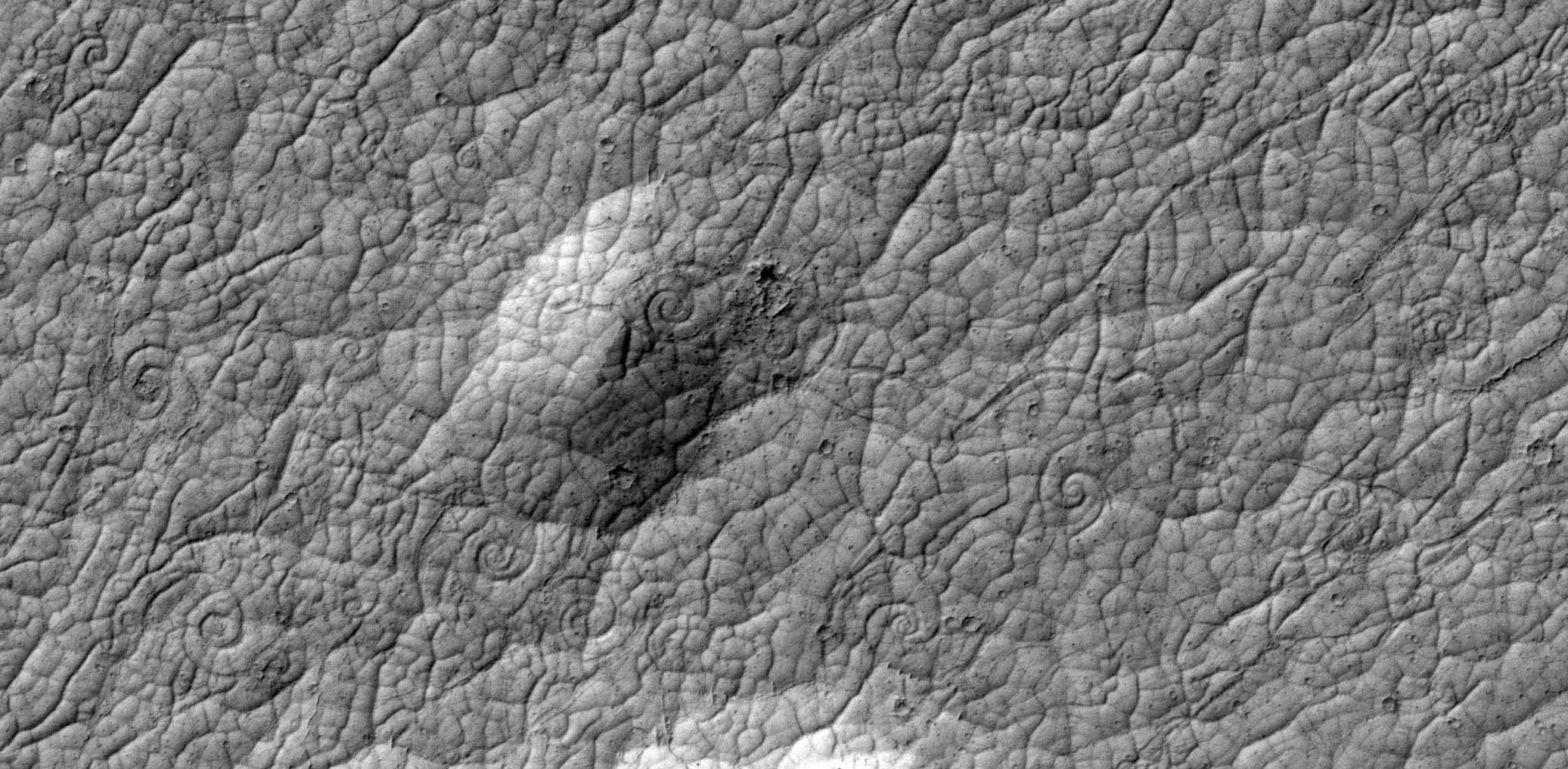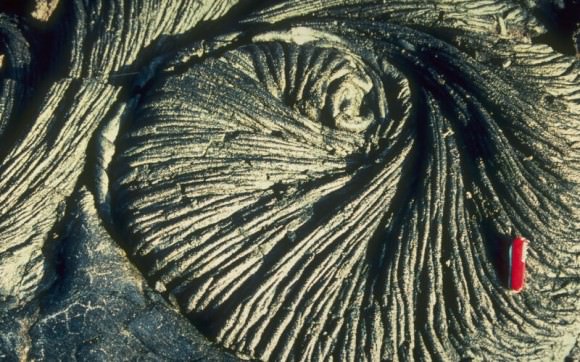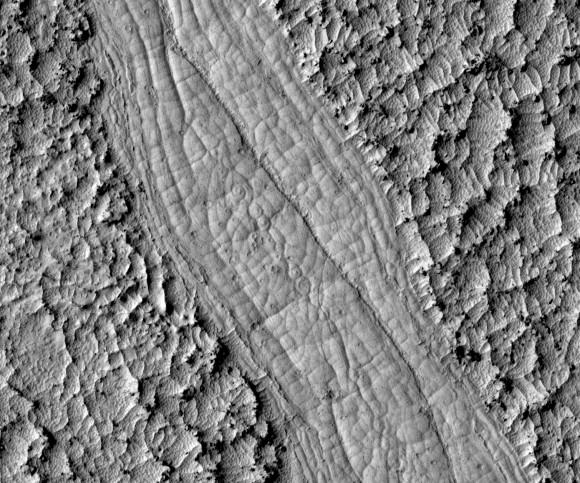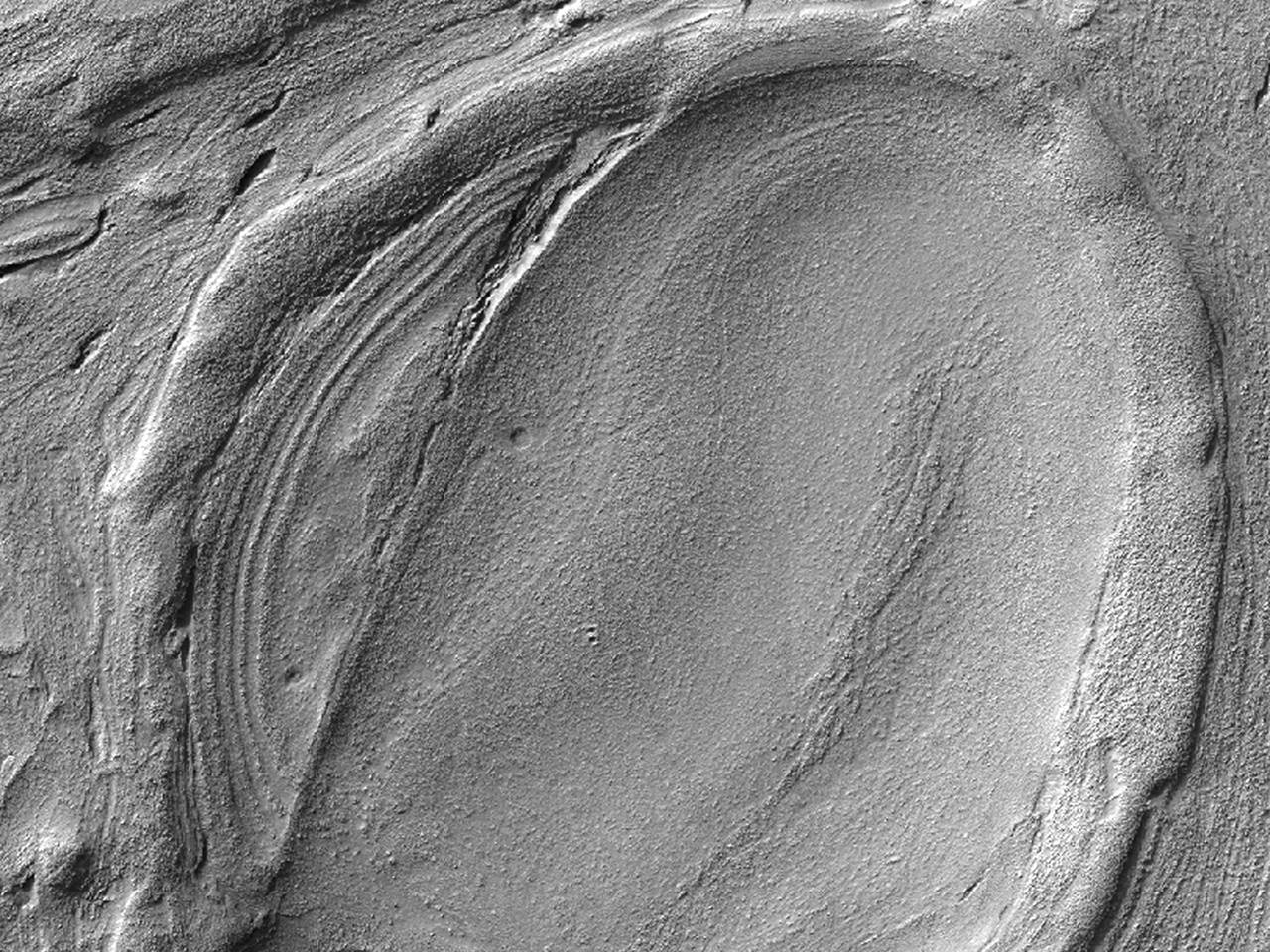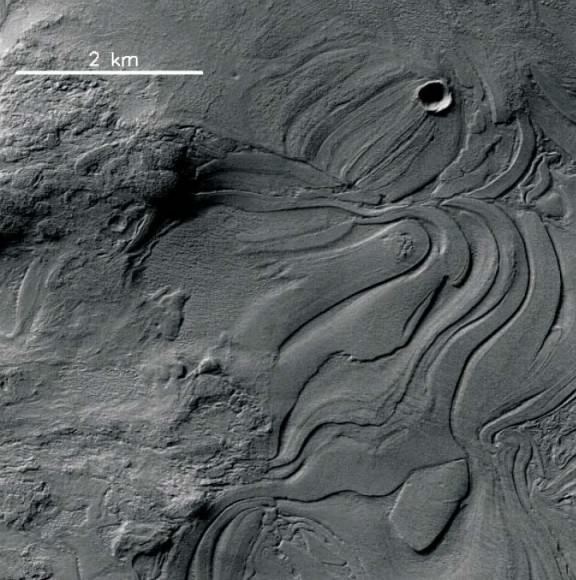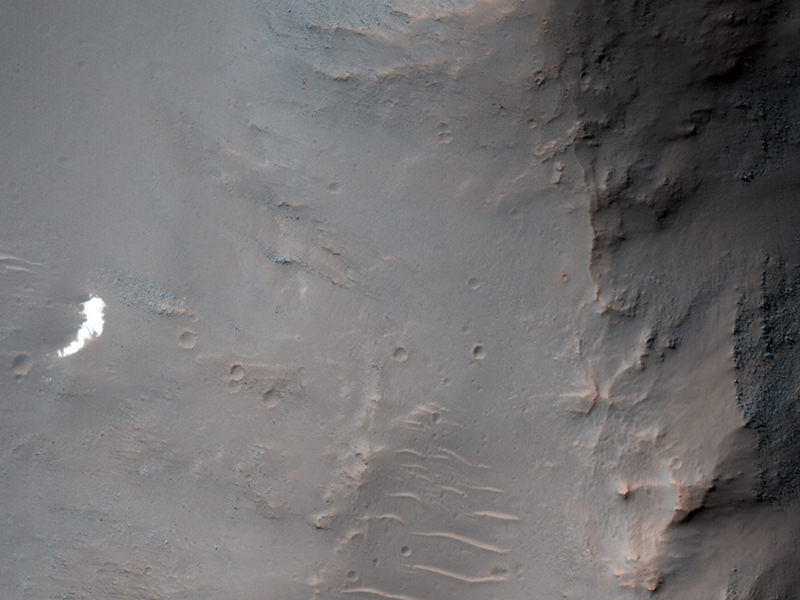HiRISE image of Curiosity’s tracks, landing zone and the MSL rover at John Klein outcrop (NASA/JPL/University of Arizona)
As Curiosity prepares for the historic first drilling operation on Mars, the HiRISE camera aboard the Mars Reconnaissance Orbiter captured an image of it from 271 km (169 miles) up, along with twin lines of tracks and the blast marks from the dramatic rocket-powered descent back on August 6 (UTC).
The image here was acquired on Jan. 13, Sol 157 of the MSL mission, as part of a dual HiRISE/CRISM observation of the landing site. According to The University of Arizona’s HiRISE site it’s the first time the rover’s tracks have been imaged in color.
Her original landing site can be seen at the right edge. (Wait… did I just say “her?”)
The pair of bright white spots in the HiRISE image show the area immediately below where sky crane’s rockets were pointed. Those areas were “blasted clean” and therefore show brightest. The larger dark scour zone is dark because the fine dust has been blown away from the area leaving darker materials.
– Ross A. Beyer, UofA HiRISE team
Curiosity can be seen as she (yes, it was confirmed today during ScienceOnline2013 that the rover — like all exploration vehicles — is a girl) was preparing for drilling into a rock outcrop called John Klein within the “Yellowknife” region in Gale Crater. Drilling is expected to begin today, Jan. 31.
Orbital view (detail) of Curiosity at her drilling site in Yellowknife. Image was rotated so north is up. (NASA/JPL/University of Arizona)
Read more about the first drilling to be performed on Mars in this article by Ken Kremer, and see more news from the MSL mission here.

